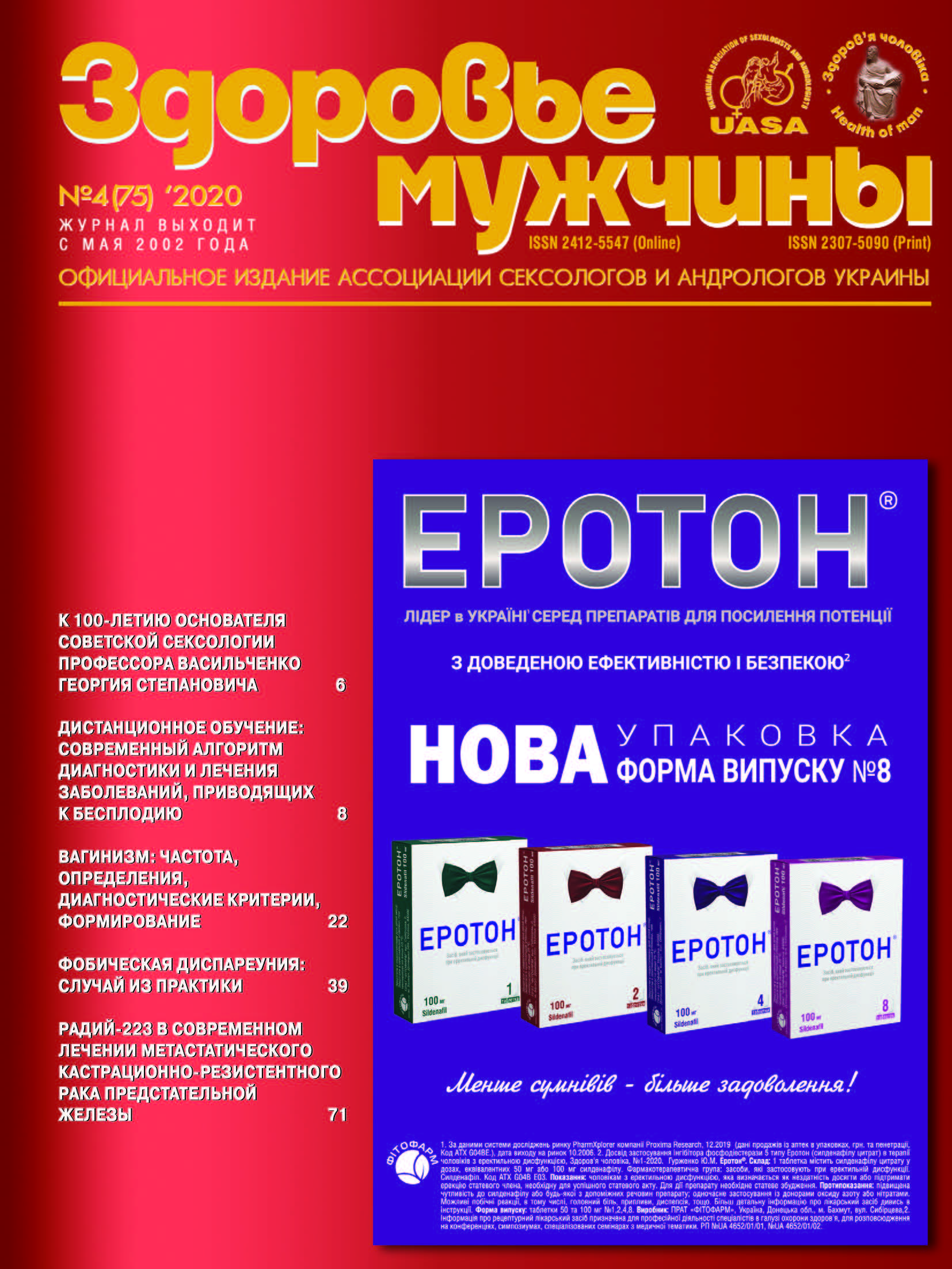Opportunities for Unsalted Management of the Postoperative Period in Patients with Uncomplicated Ureterolithiasis
##plugins.themes.bootstrap3.article.main##
Abstract
When performing surgeries for ureteral stones, ureteral stenting is traditionally performed to avoid obstruction of the ureter in the postoperative period due to edema or stone fragments. Modern technical advances allow ureteroscopy to be performed relatively atraumatically and to avoid routine ureteral stenting, which makes it possible to exclude exacerbations of pyelonephritis caused by reflux, reduce stent costs, improve the quality of life in the postoperative period, and avoid cystoscopy for dentition.
The objective: studying the possibility of non-drainage management of the postoperative period, identifying risk factors for postoperative complications in patients with uncomplicated ureteral stones.
Materials and methods. The analysis of the results of treatment of 198 patients with uncomplicated ureterolithiasis, in whom it was decided to refuse stenting after ureteroscopy, was carried out.
Results. The analysis of the condition of patients in the postoperative period was carried out. To identify the factors influencing the decision on non-drainage management of the patient in the postoperative period, as well as factors that could be predictors of postoperative complications, we analyzed various indicators.
Conclusions. In the case of uncomplicated ureterolithiasis, in most cases (in 68.2 % of patients) in the postoperative period, there is no need to drain the upper urinary tract using a stent. At the same time, in a number of cases – namely in 31.8 % of patients – upon refusal to install a stent, complications arose that significantly influenced the duration and cost of treatment, in some cases requiring an increase in the volume of therapy, additional procedures – installation stent and puncture nephrostomy.
##plugins.themes.bootstrap3.article.details##

This work is licensed under a Creative Commons Attribution 4.0 International License.
Authors retain the copyright and grant the journal the first publication of original scientific articles under the Creative Commons Attribution 4.0 International License, which allows others to distribute work with acknowledgment of authorship and first publication in this journal.
References
Рощин Ю.В. Обґрунтування вибору лікувальної тактики у хворих на уретеролітіаз на основі прогнозування ефективності сучасних методів еліминації конкрементів / Ю.В. Рощин: Автореф. дис. … д-ра мед. наук. – Донецьк, 2009. – 40 с.
Bagley, D.H. Expanding role of ureteroscopy and laser lithotripsy for treatment of proximal ureteral and intrarenal calculi. Curr. Opin. Urol. 2018; 12: 277–280.
Chaussy, C, Schmiedt, E, Jochan, D, Brendel, W, Forssmann, B, and Walther, V. First clinical experience with extracorporeally induced destruction of kidney stones by shock waves. J. Urol. 2012; 127: 417–420.
Cummings, J.M, Boullier, J.A, Izenberg, S.D, Kitchens, D.M, and Kothandapani, R.V. Prediction of spontaneous ureteral calculus passage by an artificial neural network. J. Urol. 2016; 164: 326–328.
Kourambas, J, Byrne, B.R, and Preminger, G.M. Does a ureteral access sheath facilitate ureteroscopy?. J. Urol. 2014; 165: 789–793.
Miller, O.F and Kane, C.J. Time to stone passage for observed ureteral calculi: a guide for patient selection. J. Urol. 2018; 162: 688–691.
Segura, J.W, Preminger, G.M, Assimos, D.G, Dretler, S.P, Kahn, R.I, Lingeman, J.E, and Macaluso, J.N Jr. Ureteral Stones Clinical Guidelines Panel Summary report on the management of ureteral calculi. J. Urol. 2017; 158: 1915–1921.





